Outer Canthus Painaccording to TCM
Symptom family: Eye Disorders and Symptoms
Parent symptom: Canthus Pain
What is Outer Canthus Pain?
Outer canthus pain is a discomfort or soreness at the outer edge of the eye, where the upper and lower eyelids converge. This symptom can manifest in various intensities, ranging from a slight irritation to severe pain, and may indicate underlying issues such as inflammation, infection, or other eye-related conditions.
Accompanying symptoms often include redness, swelling, and potentially other disturbances in ocular health, necessitating a thorough examination and appropriate treatment.
How does TCM view Outer Canthus Pain?
In Traditional Chinese Medicine (TCM), outer canthus pain is not just an isolated symptom but a sign of deeper imbalances within the body. TCM theory often links this pain to disharmonies in the Liver and Gallbladder Channels, with potential causes being Liver Fire, Wind-Heat invasion, or Qi Stagnation.
The approach in TCM is holistic, focusing on restoring balance within the body's Qi, or vital energy. Treatments may include acupuncture, herbal remedies, and lifestyle adjustments, all tailored to the individual's specific patterns of disharmony.
Acupoints for Outer Canthus Pain
For the treatment of outer canthus pain, TCM emphasizes the use of specific acupoints within the Gall Bladder Channel. One such point is Fengchi GB-20, located in the neck's posterior aspect, known for its effectiveness in subduing Liver Yang and expelling Wind, both considered potential contributors to canthus pain. It also plays a role in benefiting the eyes and ears and nourishing the brain.
Another important point is Toulinqi GB-15, situated directly above Yangbai GB-14 on the head. This point is instrumental in calming the mind, subduing Liver Yang, and expelling Interior Wind, which are actions that can help alleviate pain in the outer canthus.
Yangfu GB-38, located above the external malleolus, is another key point that helps in subduing Liver Yang and clearing heat, relevant actions for treating eye pain. Additionally, Zulingqi GB-41, near the junction of the 4th and 5th metatarsal bones, is effective in reducing Liver Qi Stagnation and Liver Yang, resolving Damp-Heat, and clearing heat from the Gall Bladder Channel. Stimulating these acupoints through acupuncture or acupressure can aid in managing the symptoms of outer canthus pain, demonstrating TCM's comprehensive approach to treating ocular conditions.
Explore below some acupoints used to address outer canthus pain, organized by meridian.
- By Meridian
- Gall Bladder Channel
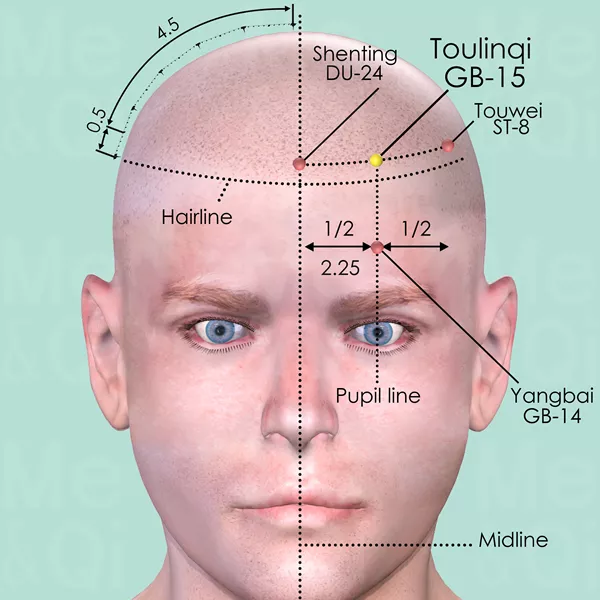
Toulinqi GB-15
Directly above Yangbai GB-14, on the pupil line, 0.5 cun within the hairline, midway between Shenting DU-24 and Touwei ST-8.
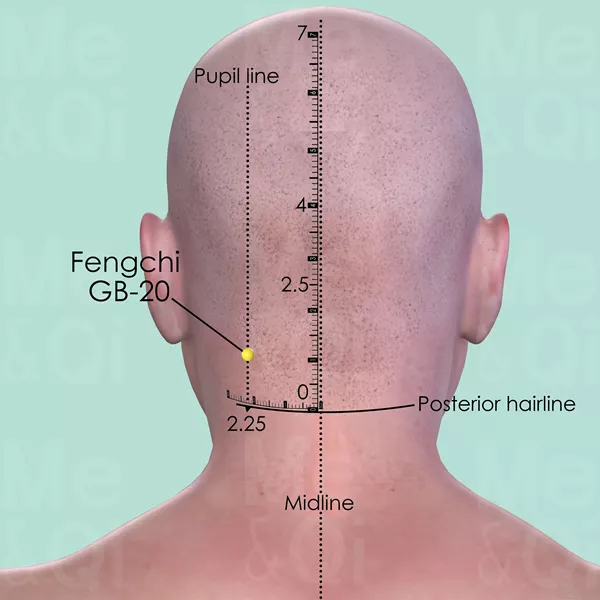
Fengchi GB-20
In the posterior aspect of the neck, below the occipital bone, in the depression between the upper portion of sternocleidomastoid and trapezius muscle.
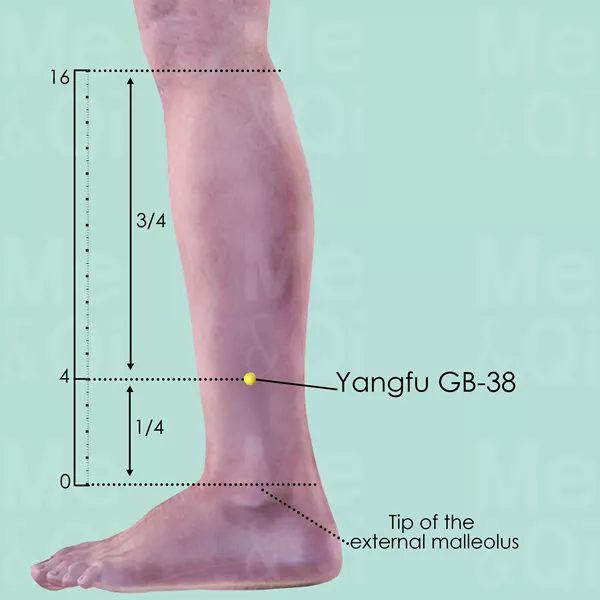
Yangfu GB-38
4 cun above and slightly anterior to the tip of the external malleolus, on the anterior border of the fibula.
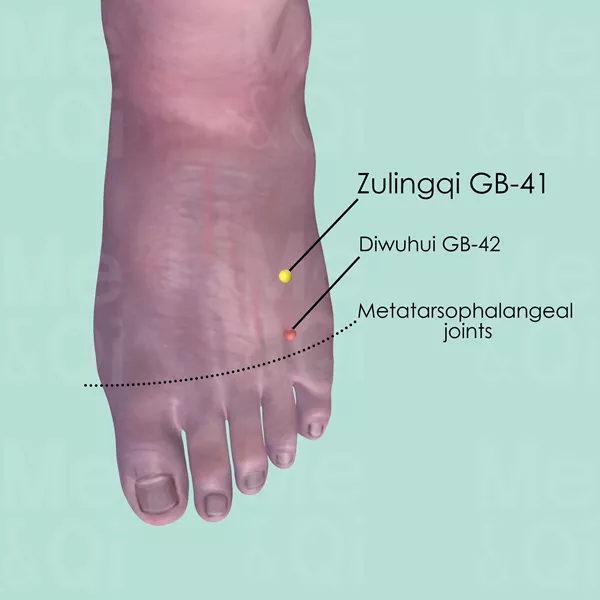
Zulingqi GB-41
In the depression distal to the junction of the 4th and 5th metatarsal bones, on the lateral side of the tendon of extensor digitorum longus muscle of the foot.
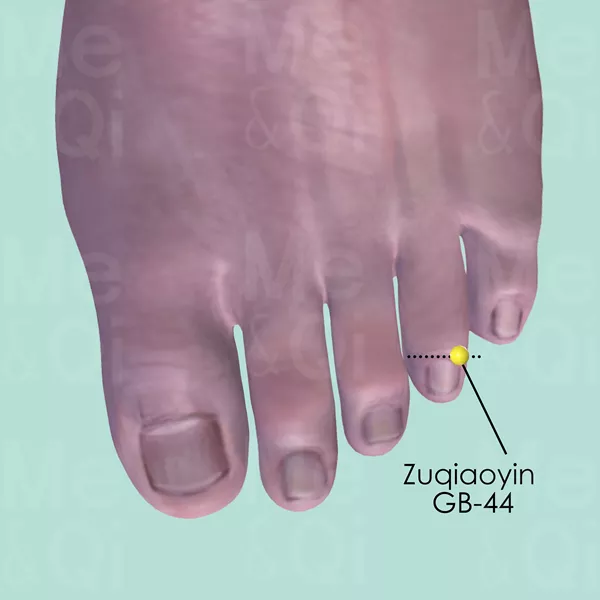
Zuqiaoyin GB-44
On the lateral side of the 4th toe, about 0.1 cun posterior to the corner of the nail.
